Hello, my artful beauties!
Ooof! I’m not going to lie, doing a 30-day challenge isn’t easy, but it is eye-opening. I wrote more about my challenge last week as I hit the halfway point. I’m even starting to think about a 100-day project. Am I mad? Probably!
But the point is that creative discomfort has been a blessing in disguise.
How Art Heals Us
While I was drawing this week, I popped on a podcast, “How Art Heals Us” from the folks at The Science of Happiness.
This episode is a reminder that creativity is care. It’s healing, bonding, and wildly freeing, especially in times when you’re carrying emotional weight or overwhelm.
Whether it's a doodle on a scrap of paper, a splash of colour in your sketchbook, or some cutting out and collage, art offers us a beautiful, embodied way to be more, do less.
Creativity as Survival and Connection
In the podcast, poet and filmmaker Shabnam Piryaei shares how visual art became her sanctuary while navigating the heavy demands of caring for her father with dementia, motherhood, as well as a busy professional life.
She speaks of art as a lifeline and a way to connect, to nourish, and be present. Her story beautifully illustrates how creativity isn't just a hobby, it's a way of being, and a practice of letting go. Something I experience every day when I draw.
Art isn't confined to start-and-stop moments. It flows into life, a natural and ongoing expression of self, presence and emotion.
“It wasn’t about being good. It was about being present, being together, and allowing something unexpected to emerge.”
Shabnam Piryaei
The part that got me really excited was the interview with Dr Girija Kaimal in the episode. Dr. Kaimal is a leading researcher in art therapy and creative wellbeing, and her work centres around a bold but beautiful idea - one that I live by: creative expression is a basic human need.
Her research backs what Shabnam experienced: creating art reduces stress hormones, improves mood, and even supports brain function in those with dementia. It reconnects us with ourselves and each other in the most human, heart-centred way.
🖋️ The Science of Making Art (Even Badly)
Dr. Girija Kaimal offers a powerful reminder of something many of us forget: making art isn't just a "nice-to-have" hobby. It’s a fundamental human instinct that helps us survive, connect, and thrive.
Through decades of research, including over 100 peer-reviewed articles and numerous books, she’s shown that making art, even simple everyday doodles, can help us feel more alive, less stressed, and more connected to ourselves and others.
“We might be in the digital age, our bodies are still in the forest, very sensitive to touch, taste, sound, sight, art has existed since we have existed as human beings, as Homo sapiens.”
Dr. Girija Kaimal
🎨 1. Art making is an evolutionary instinct
Our brains are wired for imagination. They’re constantly imagining possible futures as a survival mechanism, and art is one of the ways we make sense of those imagined scenarios and share them with others.
“No other species does this,” says Dr. Kaimal. Art may not be “useful” in the traditional sense, but it fulfils a deep existential need, to say :
“Here I am. This is what I’ve lived. Will you witness it with me?”
🧠 2. Suppressing creativity takes more effort than expressing it
In one of her studies, participants were asked to complete two types of tasks: one creative, the other repetitive and boring.
The results showed that the brain worked harder to suppress creativity than to express it. In other words, it’s more effortful and potentially more draining to bottle up your creative instincts than to let them flow!
This may help explain why a lack of creative expression is often linked with frustration, negative emotions, and a sense of fulfilment.
Creativity isn’t just decoration, it’s regulation.
😌 3. Art making reduces stress, even if you think you’re not “good” at it
Dr. Kaimal’s research at Drexel University revealed that just 45 minutes of making art, regardless of skill, lowers cortisol levels, the hormone associated with stress.
This isn't about talent or training. Whether you're doodling, colouring, or painting, creative activity can activate reward pathways in the brain and offer genuine physiological benefits.
The process itself is the medicine.
👶 4. For children, creative expression is protection
Importantly, Dr. Kaimal’s work also explores how art supports children through adversity. Children who experience trauma often carry it in their nervous systems, and creative expression, especially when facilitated by caring adults, can be a buffer against long-term harm.
Unfortunately, modern education systems often prize “skill” over expression. But in Kaimal’s words, “That’s not how we evolved.”
Every child deserves the chance to make marks, make noise, and make meaning, without judgment.
(I’m passionate about this and about fostering creativity in our young people, and will explore this further in upcoming posts.)
💫 5. Art meets us where we are
Perhaps one of the most liberating takeaways from Dr. Kaimal’s philosophy is that art can be whatever you need it to be. It can be meditative, joyful, expressive, rebellious, or soothing. It can help you process grief, celebrate joy, or simply pass the time in playful exploration.
There is no right way to be creative, only your way.
Wonderful!
🌷 Creativity is Care and I LOVE it!
This conversation is a reminder that we don’t have to wait for permission to create. We don’t need to be “good” at art for it to be good for us. Whether it’s a five-minute doodle, a scribbled poem, or some late-night journaling, every act of creative expression is a small act of self-reclamation and rebellion against the hustle of content pings, dings and notifications.
That’s what I’ve been learning (and re-learning) through my 30-day drawing challenge. It’s not always easy. Some days I feel wobbly, distracted, or downright resistant, but something shifts every time I show up.
It’s not about the perfect drawing either. It’s about the act of drawing. It’s about claiming time to be present, play, feel, and remember that creativity isn’t a luxury, and from my experience, it’s a lifeline.
Here’s to more scribbles, wobbly lines, and wonky flowers. Here’s to creating, not because we have to, but because we get to.
Have an inspired day 💕
✍🏻 Want to join me?
And if you’re curious about the gorgeous pen I’m using, I’ve got a little gift for you:
✨ Use GEORGIESTCLAIR at Tom’s Studio for 10% off selected goodies (min spend £30).
(This is an affiliate code, which means I earn a small commission if you make a purchase. It doesn’t cost you anything extra; it helps support my work so I can keep making art! Thank you 💛)
(I’ll be showing up most days on Notes, Instagram & YouTube shorts - see you there!)





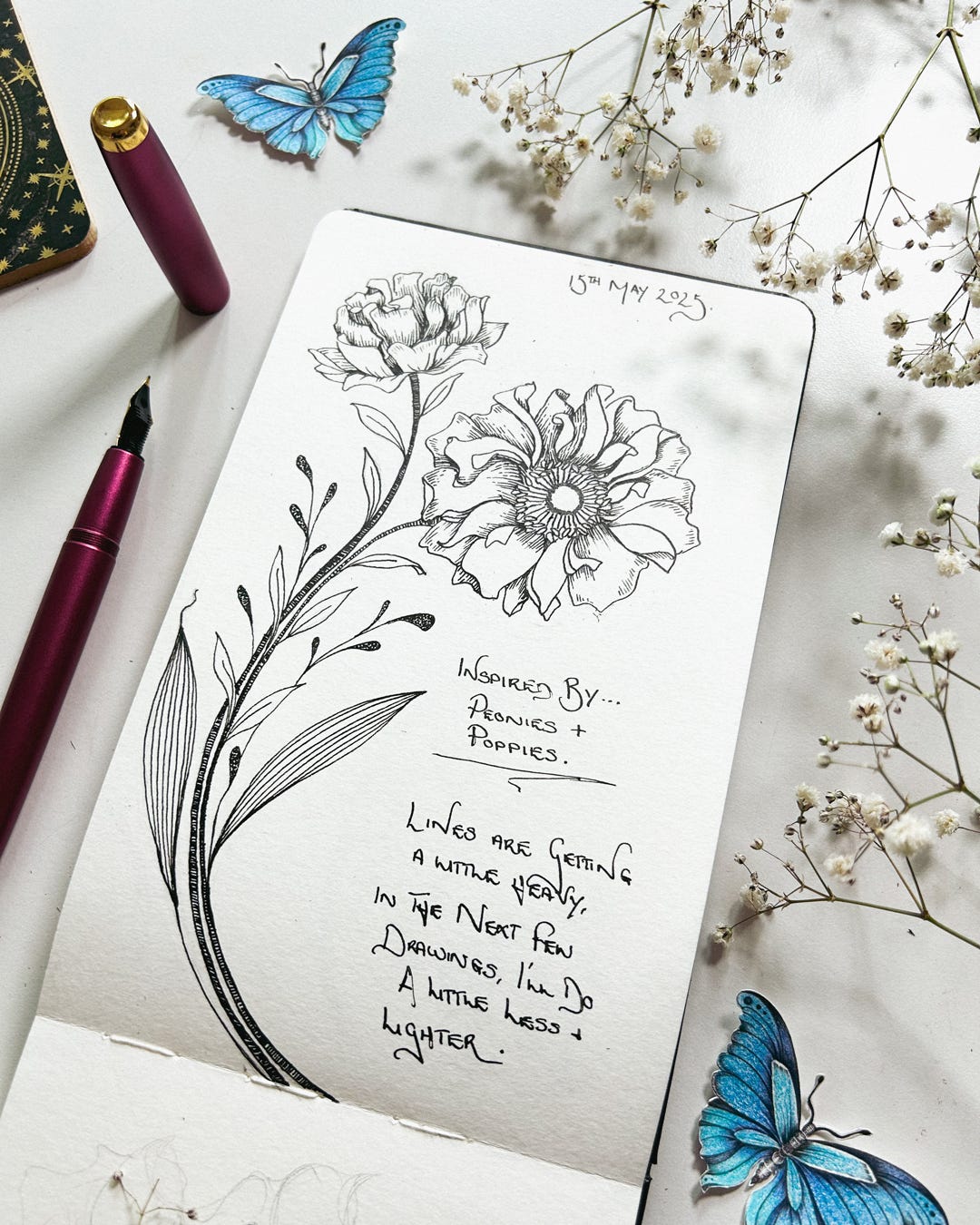
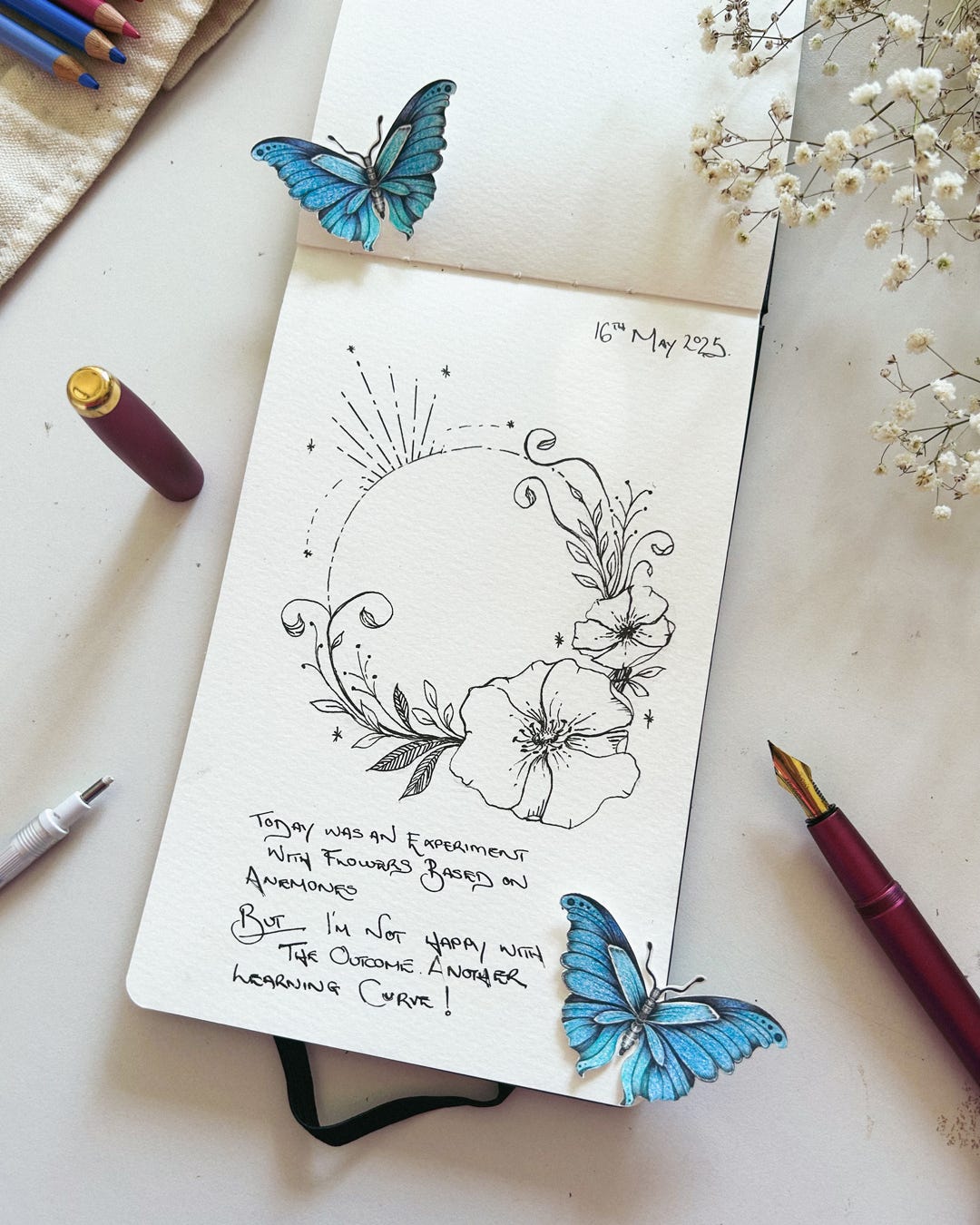

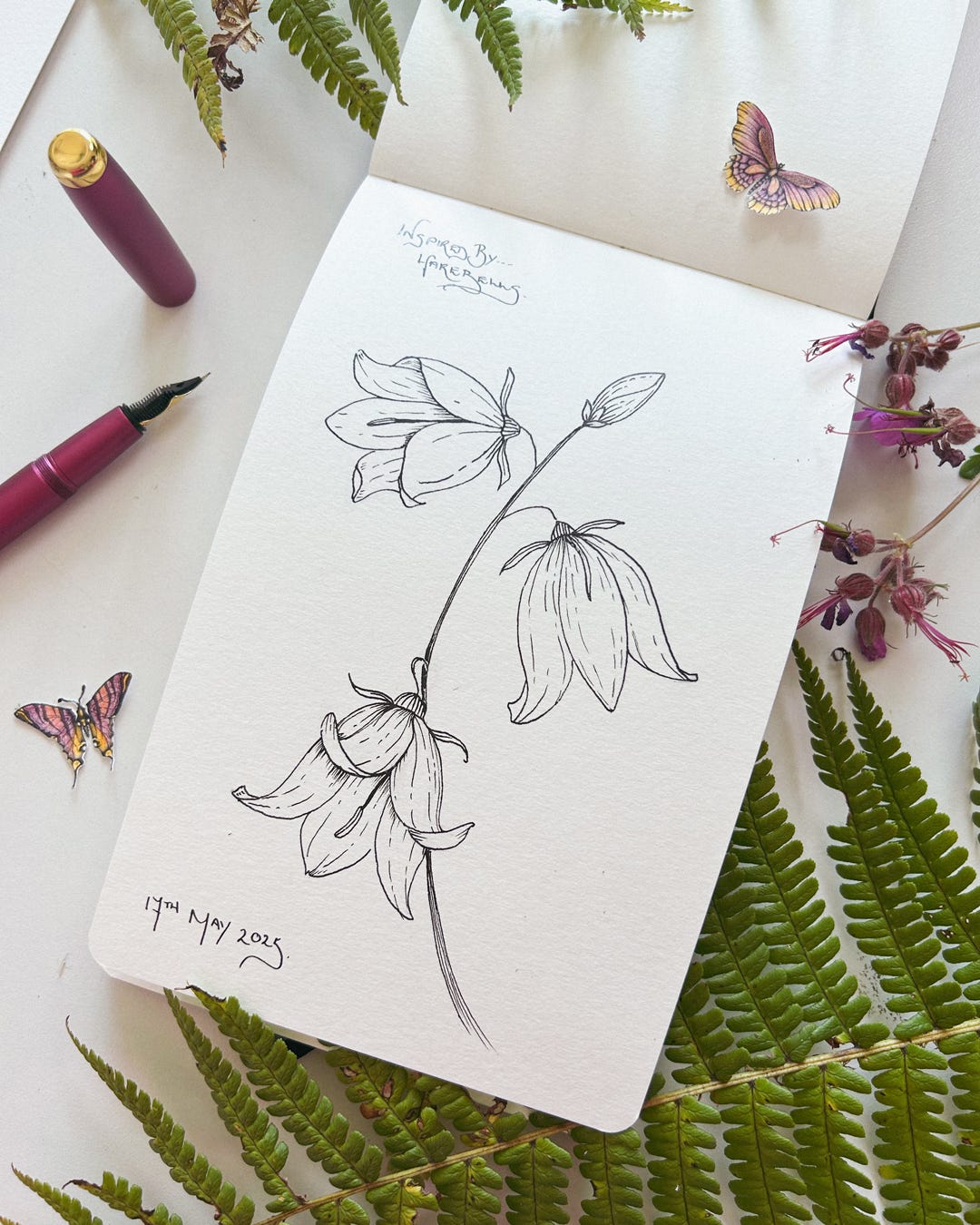
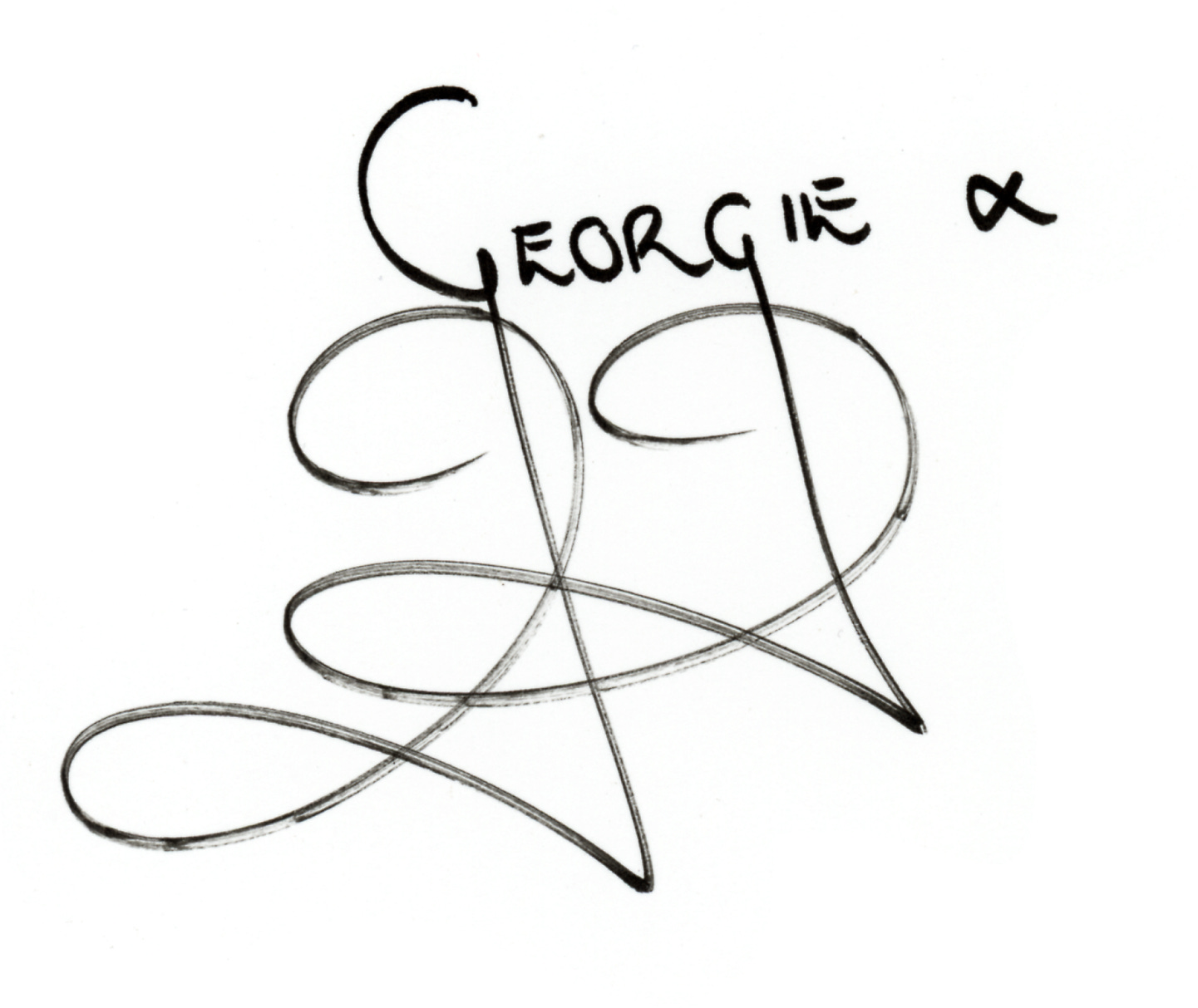
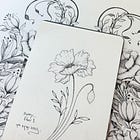

Your 30 day flowers are pretty stunning. Loving the lily particularly. Am soaking up your inspiration to start my challenge!
Loving this SOO much… Art is so powerful & therapeutic!!! I need to buy more supplies & get started…💙